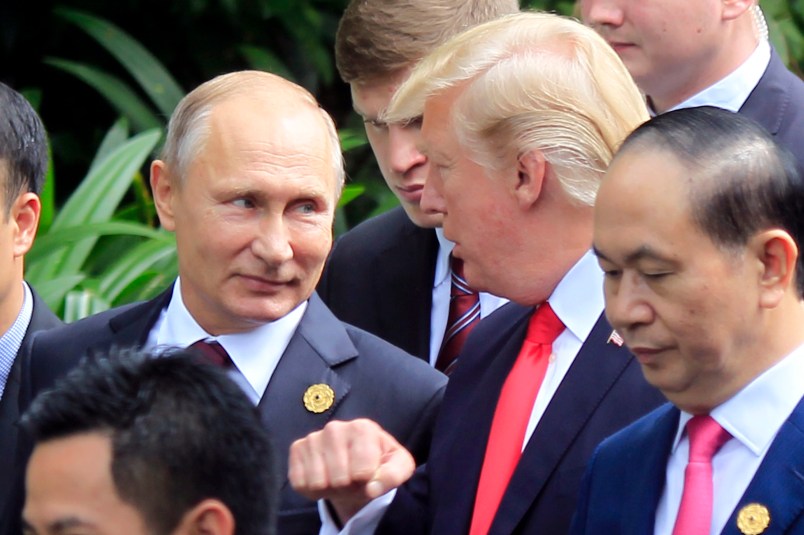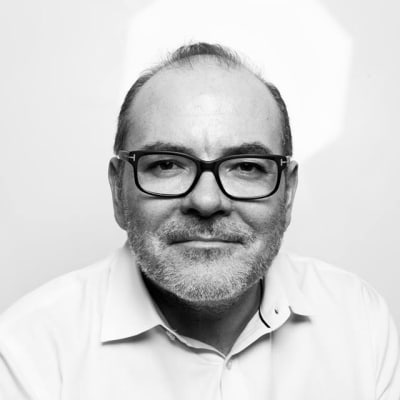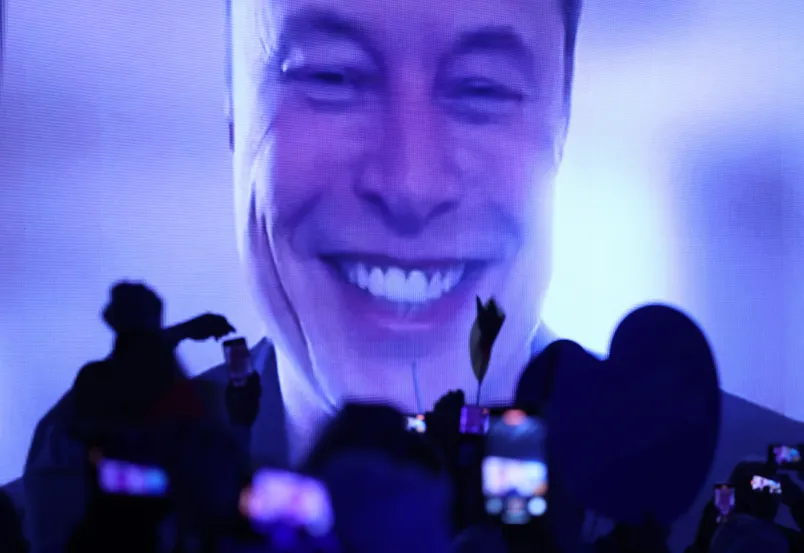A week ago I said we were at the end of the beginning of the Trump/Russia story. The big question of whether there was collusion between Russia and the Trump campaign has been answered for anyone who has their eyes open. They did. The question is how far it went and what was involved. But there’s another question, related but distinct, which is in my mind perhaps the biggest question or mystery about the whole story.
We know that for years before the 2016 presidential campaign Donald Trump had extensive and deep financial ties to Russia and other countries of the former Soviet Union. This basic point isn’t even disputed. As far back as 2008, Trump’s son notoriously boasted to an investor conference that “we see a lot of money pouring in from Russia.” But of course it’s more specific than that. Russians, Russian emigres and people from other countries of the former Soviet Union made up a wildly disproportionate number of the buyers of units in Trump’s luxury apartment buildings. Russian or Ukrainian or emigre money were major funders of his major building projects. Trump Soho is the most notorious example. But it’s far from the only one.
Then there are the various business partners: Felix Sater, Russian immigrant, convicted felon and mob associate who was one of the Trump’s top partners in the decade and a half before his presidential run; Michael Cohen, Trump’s American born ‘lawyer’ with deep family ties to Ukraine who was also a conduit for millions, perhaps hundreds of millions of dollars out of the countries of the former Soviet Union. You probably known him better as Trump’s bully lawyer on TV. That’s not why he works in the Trump Organization, or did.
My aim for now is not to be exhaustive. We’ve already discussed Trump’s money ties to Russia extensively here in the Editors’ Blog going back more than 18 months. Suffice it to say that we know Trump’s operations were heavily dependent on Russian money and that he had close connections to the Russian and Ukrainian criminal underworld. Whether his operations met the specific legal qualifications of money laundering there’s no question that a major part of Trump’s business model was allowing wealthy Russians and oligarchs to get money out of Russia, either to protect it from capricious authoritarian governments at home or to cleanse it of its origins in criminal activity.
All this and more we know.
The question is how does this relate and connect to what happened during the 2016 campaign – Russia’s interference campaign, Trump’s extreme policy friendliness to Russia and whatever level of collusion bound the two together.
One answer to this is straightforward: Trump was already in business with Russia and Vladimir Putin and that was the basis of the 2016 alliance and the conspiracy to work together to subvert the 2016 election. Perhaps it was even the reason Trump ran for President. Or maybe Russia essentially owned Trump because of compromising information they had on him. In other words, in either case, Trump and Putin or others in Russia had an understanding going in about how it would all go down.
Only it can’t be quite that simple. To me the sheer ubiquity of approaches to the Trump campaign – the significance of which the Trumpers constantly deny – actually tells us this. (I’m actually surprised the smarter ones haven’t made this point. It’s not exonerating. But it is complicating.) If Trump and Putin had an understanding going in – you do this and I’ll do that in return – do you really need operatives courting Trump’s doofus foreign policy advisor George Papadopoulos in London. Or having Trump’s oligarch friend’s publicist setting up a meeting with Don Jr. and a lawyer most known for working to overturn the sanctions tied to the Magnitskey Act? These are clearly overtures, dangles as intelligence professionals call them – almost all of which got a positive response. If the plan is set, you shouldn’t need so many of what amount to cold approaches like this.
On the other hand, Trump’s connections to Russia, Russian money and the machinations of Putin-aligned oligarchs runs so deep, it is simply not credible to imagine that these pre-existing relationships with Russia and Russian money is unrelated to what happened in 2016. Not remotely credible.
Now, you might be saying, these are two extreme, strawman-ish scenarios you’re outlining. Well, I agree. That’s my point. I’m setting forth the maximal theories on either side to make the point that I don’t think we know quite where on this spectrum this all fits or how we reconcile what seems like a deep and close relationship with what seem like introductions. We know a fair amount about what happened before the campaign. We know a decent amount about what happened during the campaign. But it’s not as easy or clear as many assume how you fit them together.
The most important question is what happened during the campaign – in legal terms, in democratic terms, in national security terms. But in many ways the biggest question, the most fascinating and hardest to figure is this one I just laid out: how does Trump’s heavy dependence on Russian money and employees with deep ties to Russia and Ukraine and the criminal underworlds in those countries connect to the very pro-Russia line he took during the campaign and his campaign’s willingness to work with and conspire with the Russian disruption campaign in 2016? Sure they must be related. But how? I don’t think we really know that yet.
My best guess is that people around Putin knew Trump was crooked and dependent on Russian money and that he was likely to be friendly and up for … well, up for anything. So they went to work trying to make friends and found willing partners. He was up for anything. But that isn’t so much an explanation based on specific facts as it is the simplest explanation, the cleanest theory that accounts for all the facts we know.
This requires a lot more sleuthing and explanation.








